Manchester City Women stayed on the heels of Arsenal Women as they beat Liverpool Women 3-0 on Sunday. However, it wasn’t all plain sailing for Nick Cushing’s side as Liverpool put up a good fight.
Due to Liverpool’s gameplan, the teams went in goalless at the break. But City’s quality eventually shone through. With this, Nikita Parris became the FAWSL’s all-time top goal-scorer with her brace taking her to 37 in the competition.
This tactical analysis will demonstrate how Liverpool Women aimed to disrupt their flow and how City worked past that.
Liverpool’s Counter-Attacking Approach
Manchester City ended up with 70% possession by the end of the game and that was telling. From start to finish, Liverpool tried to contain them and were happy to concede possession to do so.
The way they went about containing Liverpool was by setting up a deep block. With great numbers back this made it difficult for City to play the intricate football they like to. The effectiveness of this in the first half can be seen here:
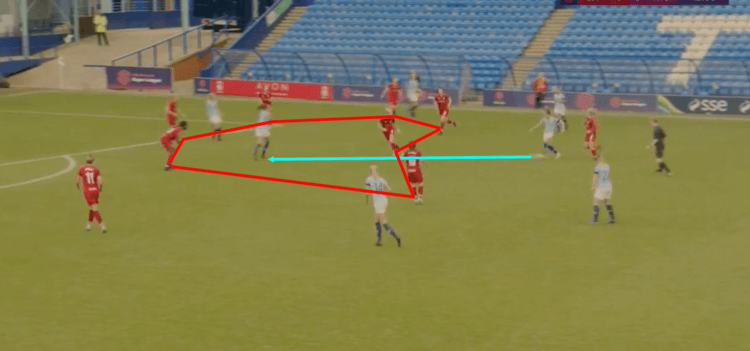
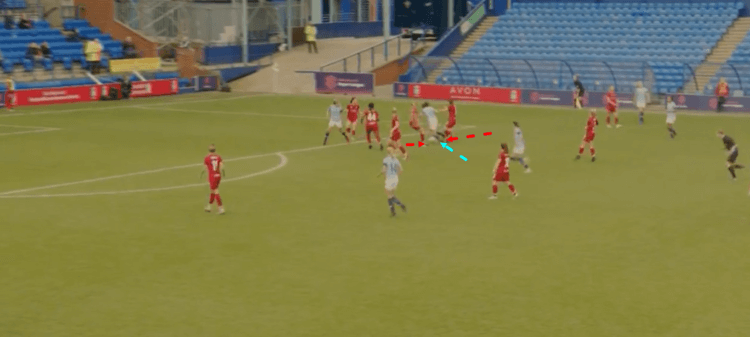
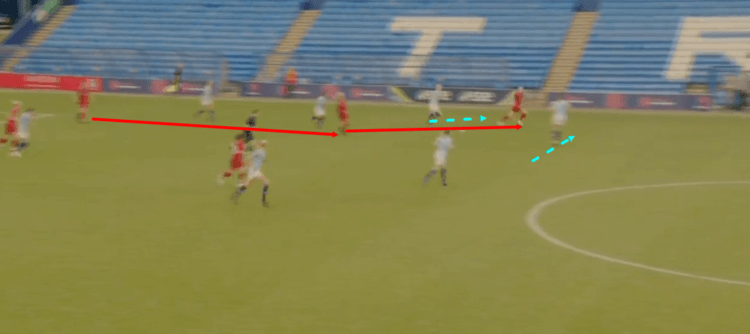
However, with so many players committed to defending, that became an issue. They weren’t able to counter as effectively as their players became outnumbered.
This is a trend that was carried out throughout the game. With this, Liverpool were able to limit Manchester City for the first-half well but couldn’t build proper attacks.
However, during the first half, City realised how to change their style of play to combat Liverpool. They couldn’t quite pull it off as they went into the break 0-0 but here’s how they tried to overcome Liverpool’s low block.
Manchester City’s Early Difficulties
Liverpool were extremely well-organised in the first-half. It may not have been an attractive brand of football, but their team as a defensive unit, worked well. This could be seen from when City were about to build an attack to when they were very deep into the final third.
Here’s an example of how they prevented Manchester City from building good attacks.
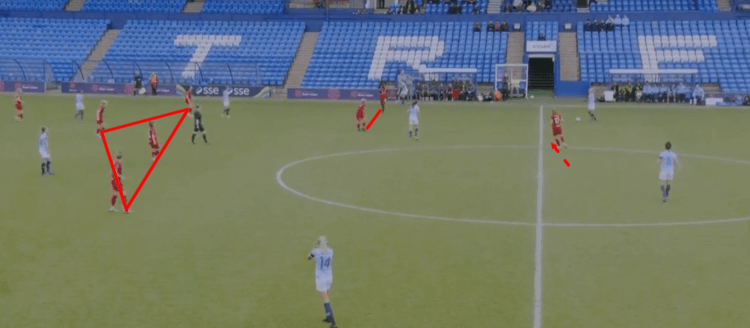
This, in turn, slows the City attack right down and makes it that much easier to defend. Instead of allowing them to play quick, incisive passes, the way Liverpool are set up forces City to second-guess and not opt for the best pass forward.
A key to this was Roberts (the deepest of the four highlighted). At the base of midfield, she kept scanning the area well to avoid allowing too much space for the City players to roam in there.
However, here’s how City tried to overcome that in the first half:
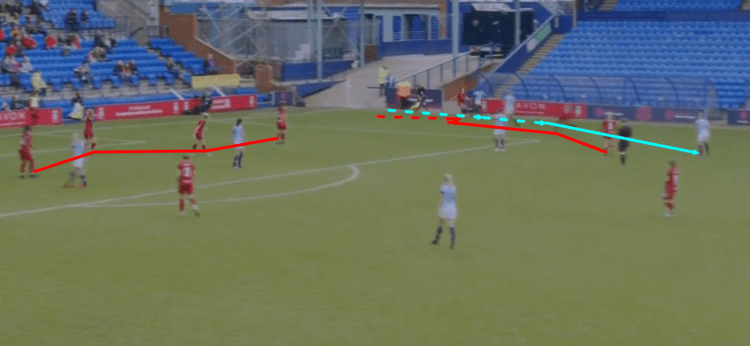
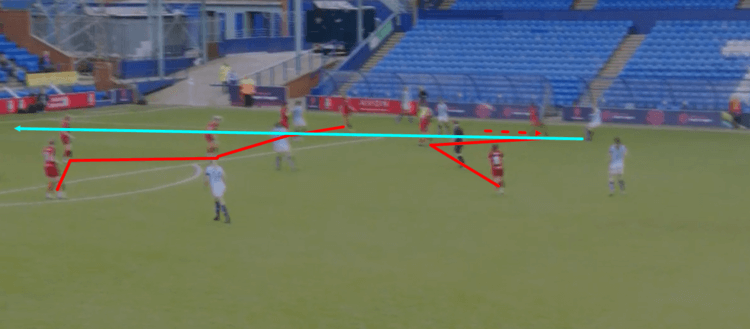
So, this didn’t quite work in the first half. After an own-goal gave City the lead, however, there was a slight change in this approach which saw them go 2-0 up.
Manchester City’s Trap
The move was very similar to the one shown above but a subtle change made all the difference.
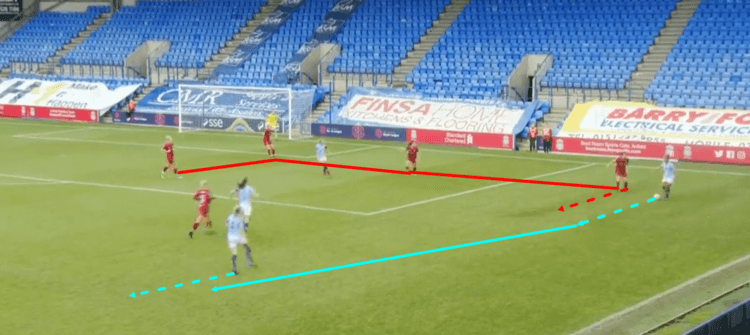
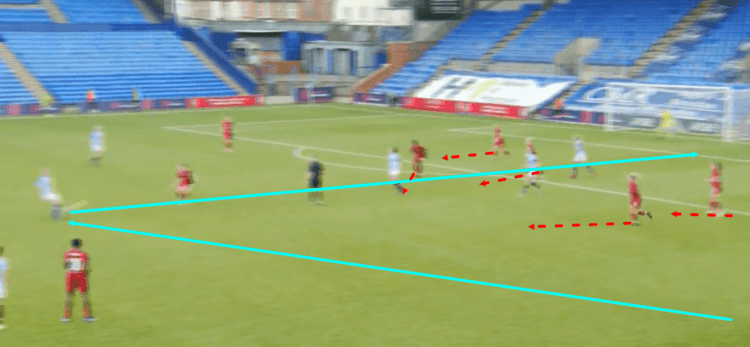
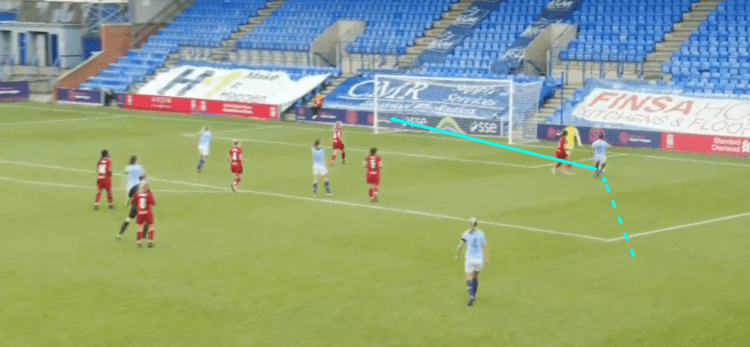
That extra set back seems so simple but it made all the difference. The Liverpool defence looked surprised that the ball was set back another time which seemed to catch them out. With that, the City player playing the ball into Parris has more space and time to pick out the pass and kill the Liverpool defence.
Summary
Overall, Liverpool weren’t bad at what they did for the most part. Manchester City were just smart enough to draw them out of their shape to take control of the game.
However, having kept City to 0-0 at half-time, I believe Liverpool could’ve been a bit braver in the second-half. By committing more players forward, they could’ve put City under real pressure but they just missed the boat.
For City, on the other hand, they proved just why they’re one of the top teams in the FAWSL. They were able to identify what was going wrong during the match, try to combat it and perfect their attack later in the game.
Also, Parris showed why she’s one of the most dangerous players going forward in the league. Although it may have difficult for most of the game, she stayed alert and it saw her make history.
However, City and nobody else for that matter, have quite matched the firepower of Arsenal Women this season. The Gunners sit above second-place City despite playing a game less in the FAWSL. When the teams meet after the Lionesses’ international break on December 2, it’s sure to be a great contest.





Comments